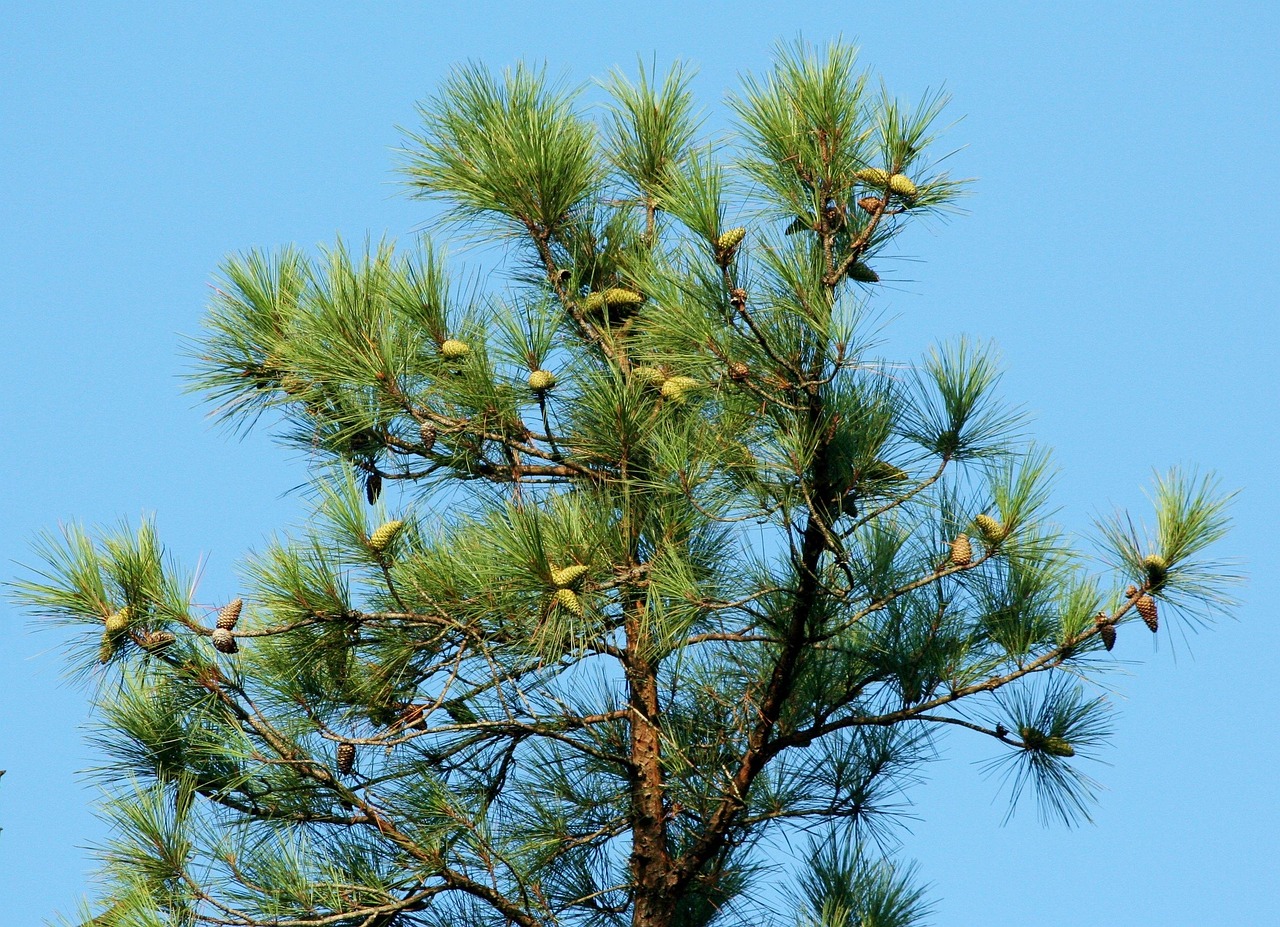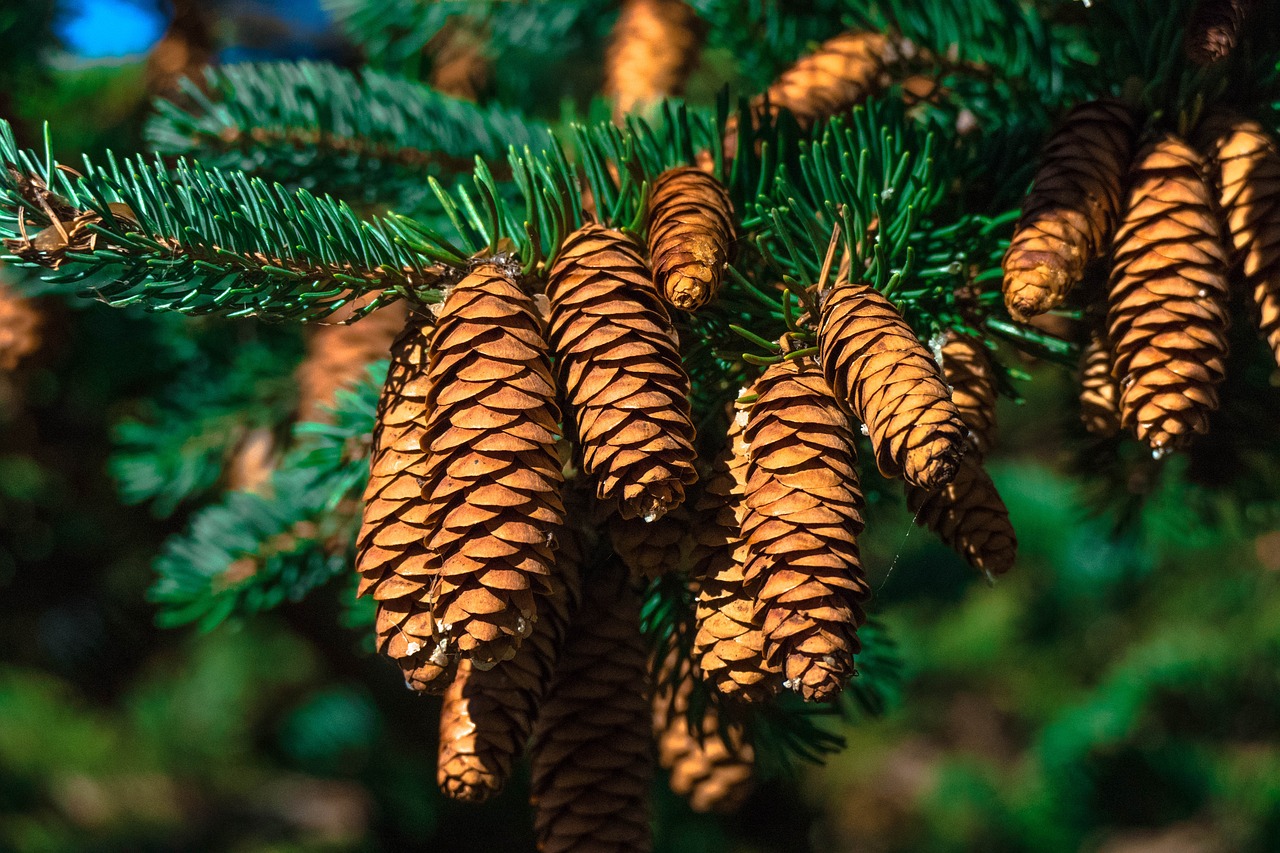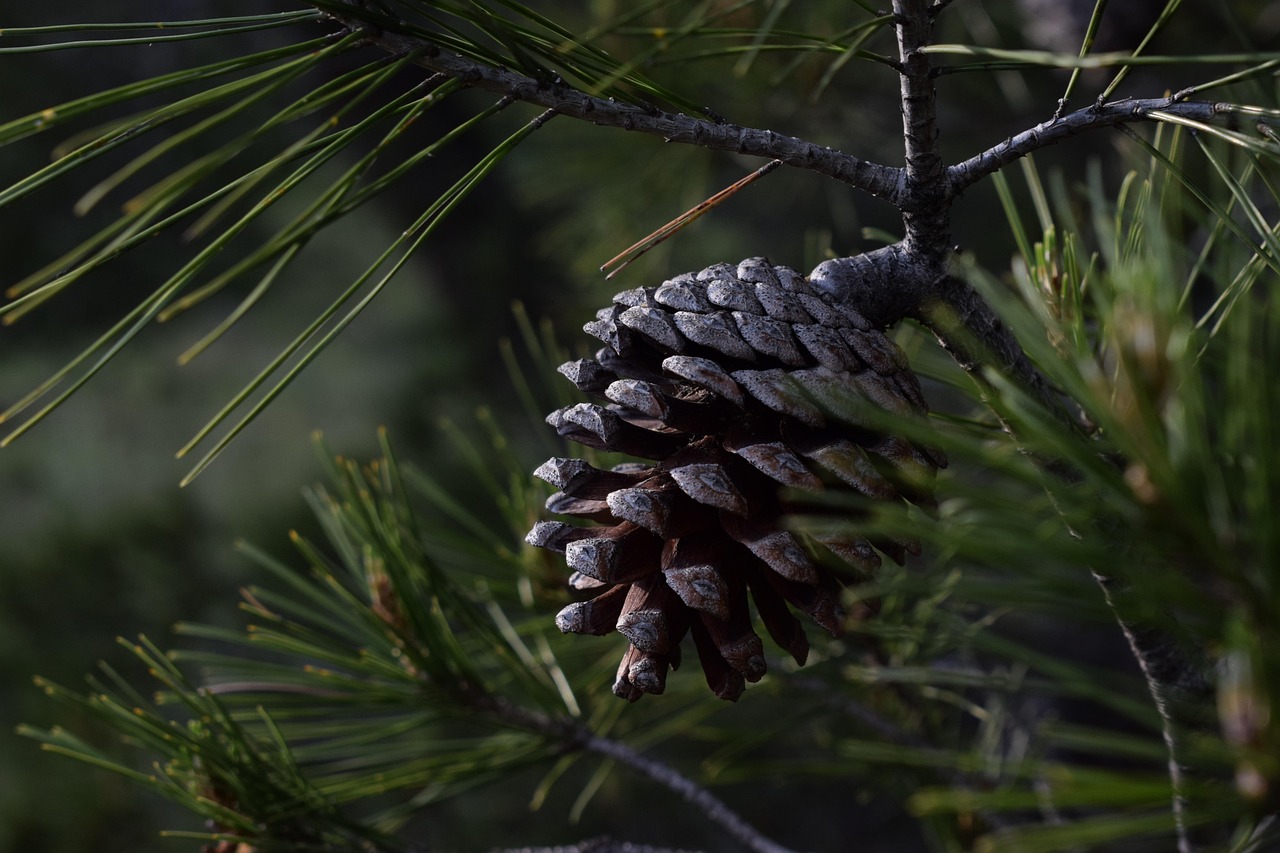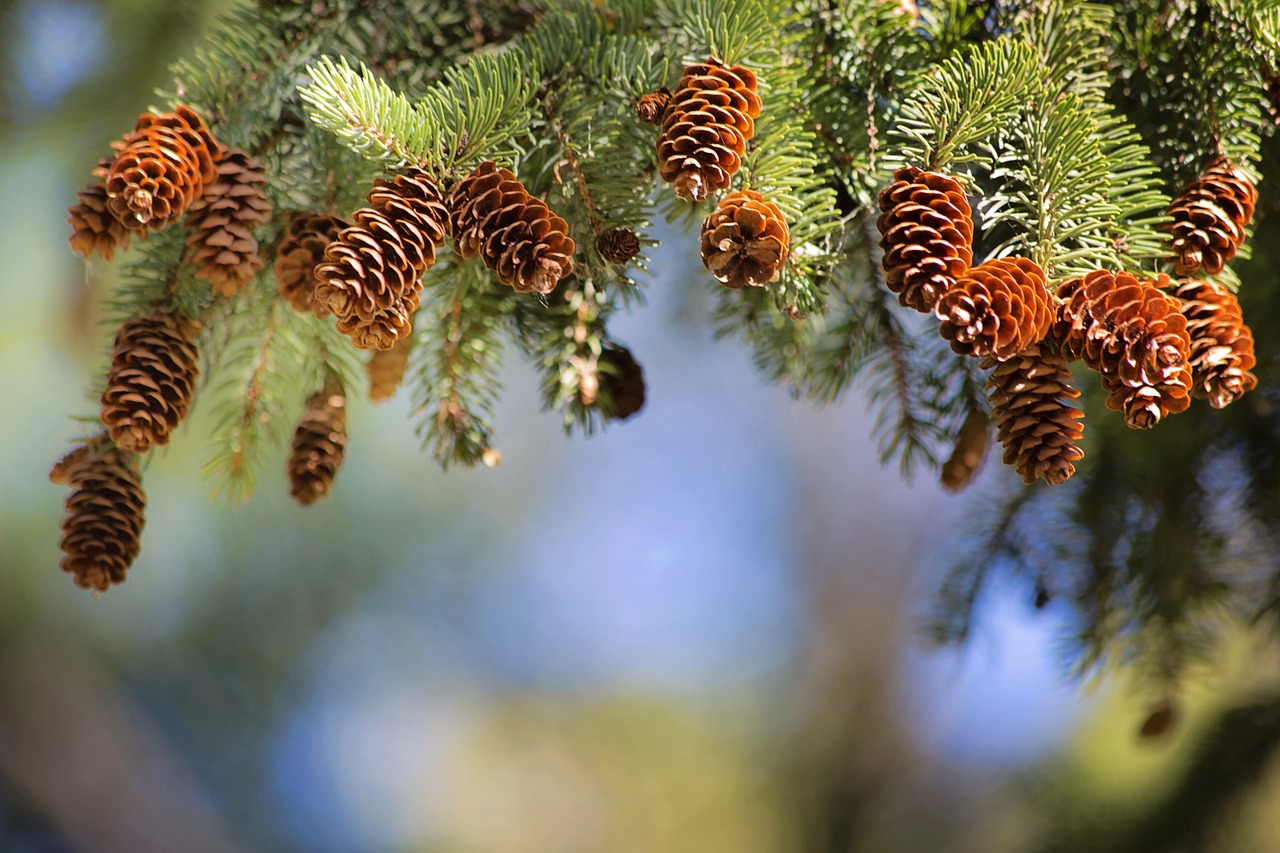The Loblolly Pine (Pinus taeda) is indeed native to Virginia. This species thrives in the southeastern United States and plays a significant role in Virginia’s ecology and economy.
Understanding the Loblolly Pine

The Loblolly Pine is a tall evergreen tree that can reach heights of over 100 feet. It is known for its straight trunk and broad, conical crown. The tree is distinguished by its long needles, which grow in bundles of three and can reach lengths of 8 to 10 inches. The cones of the Loblolly Pine are typically 3 to 6 inches long and can take up to two years to mature.
This species primarily grows in areas with moist, well-drained soils. It is commonly found in the coastal plains and uplands of Virginia, where it often forms extensive pine forests. The Loblolly Pine prefers full sunlight and is resilient in a variety of soil types, making it adaptable to different environmental conditions.
Ecological Importance
The Loblolly Pine serves as a crucial component of the ecosystem in Virginia. It provides habitat and food for various wildlife species, including birds, small mammals, and insects. The tree’s thick foliage offers shelter, while its seeds are a food source for many animals.
Additionally, Loblolly Pines play an essential role in soil conservation. Their extensive root systems help prevent soil erosion, particularly in areas prone to heavy rainfall. The trees also contribute to carbon sequestration, helping mitigate climate change by absorbing carbon dioxide from the atmosphere.
Economic Significance
The Loblolly Pine is vital to Virginia’s forestry industry. It is one of the most commercially important pine species in the southeastern United States. The wood of the Loblolly Pine is used for various applications, including:
- Construction lumber
- Plywood
- Paper products
- Furniture
Due to its rapid growth and high yield, the Loblolly Pine is a preferred choice for reforestation and timber production. The economic benefits derived from this species contribute significantly to local economies and provide jobs in forestry and related industries.
Growth Conditions
Loblolly Pines thrive in specific environmental conditions. Here are some key factors that influence their growth:
| Factor | Description |
|---|---|
| Soil Type | Well-drained sandy or loamy soils are ideal for Loblolly Pines. |
| Sunlight | These trees require full sunlight for optimal growth. |
| Water | They prefer moist conditions but can tolerate drought once established. |
| Temperature | Loblolly Pines grow well in warm climates typical of the southeastern U.S. |
Understanding these growth conditions can help landowners and forestry managers effectively cultivate Loblolly Pines, ensuring sustainable harvesting practices while maintaining ecological balance.
Cultural Significance
Beyond their ecological and economic importance, Loblolly Pines hold cultural significance in Virginia. They are often associated with the state’s natural beauty and heritage. Many communities celebrate pine forests through festivals and conservation efforts that promote awareness of local ecosystems.
The presence of Loblolly Pines in Virginia’s landscape serves as a reminder of the state’s rich natural history. Their majestic stature contributes to the scenic views that residents and visitors cherish.
Threats to Loblolly Pine Populations
While the Loblolly Pine is a resilient and adaptive species, it faces several threats that can impact its populations in Virginia and the surrounding regions. Understanding these threats is crucial for conservation efforts and sustainable forestry practices.
Pests and Diseases
One of the significant threats to Loblolly Pines is the presence of pests and diseases. Various insects and pathogens can cause severe damage to these trees, leading to reduced growth, tree mortality, and economic losses. Some notable pests and diseases include:
- Southern Pine Beetle: This bark beetle is one of the most destructive pests of pine trees. It attacks weakened trees, leading to their decline and death.
- Fusiform Rust: A fungal disease that affects the branches and stems, causing deformities and weakening the tree structure.
- Tip Blight: Caused by a fungal infection, this disease affects the new growth of the tree, leading to stunted growth and branch dieback.
Effective pest management strategies are essential to protect Loblolly Pines from these threats. Regular monitoring and timely interventions can help mitigate the impact of pests and diseases on forest health.
Climate Change
Climate change poses another significant threat to Loblolly Pine populations. Changes in temperature and precipitation patterns can affect growth rates, reproduction, and overall tree health. Some potential impacts include:
- Increased Drought: Prolonged periods of drought can stress trees, making them more susceptible to pests and diseases.
- Temperature Extremes: Higher temperatures can alter growth patterns and increase the risk of wildfires.
- Shifts in Habitat: Changes in climate may shift suitable habitats for Loblolly Pines, potentially reducing their range.
Addressing climate change through sustainable forestry practices and conservation efforts is vital for maintaining healthy Loblolly Pine populations in Virginia.
Management Practices for Loblolly Pine Forests
To ensure the sustainability of Loblolly Pine forests, landowners and forestry managers implement various management practices. These practices aim to enhance tree growth, increase biodiversity, and reduce the impact of pests and diseases.
Silvicultural Techniques
Silviculture refers to the practice of managing forest stands to meet specific objectives. For Loblolly Pine forests, effective silvicultural techniques include:
- Thinning: This involves removing some trees to reduce competition for resources. Thinning helps improve growth rates of remaining trees and enhances overall forest health.
- Clearcutting: In some cases, clearcutting may be employed to regenerate a stand. This method allows for new growth but should be carefully managed to minimize environmental impact.
- Prescribed Burning: Controlled burns can help reduce underbrush and improve habitat quality for wildlife. This technique also reduces the risk of uncontrolled wildfires.
Reforestation Efforts
Reforestation is crucial for maintaining Loblolly Pine populations. Planting new trees in areas where they have been harvested or lost due to disease or pests helps ensure future generations of this important species. Key considerations for reforestation include:
- Site Preparation: Properly preparing the site before planting can improve survival rates of young trees.
- Seed Selection: Choosing high-quality seeds from local sources can enhance genetic diversity and resilience.
- Maintenance: Regular care, including watering and weed control, is essential for young trees to establish successfully.
By implementing these management practices, stakeholders can contribute to the health and sustainability of Loblolly Pine forests in Virginia, ensuring they continue to thrive for generations to come.

Wildlife Associated with Loblolly Pine Ecosystems

The Loblolly Pine ecosystem supports a diverse range of wildlife species. This tree species provides habitat, food, and shelter for various animals, contributing to the overall biodiversity of Virginia’s forests. Understanding the interactions between Loblolly Pines and local wildlife helps in managing these ecosystems effectively.
Bird Species
Loblolly Pine forests are home to numerous bird species, many of which rely on the trees for nesting and feeding. Some notable birds associated with Loblolly Pine ecosystems include:
- Red-tailed Hawk: These raptors often nest in tall pines, using their height to survey the landscape for prey.
- Pine Warbler: This small songbird feeds primarily on insects and seeds found in pine trees and builds its nests among the branches.
- Woodpeckers: Various species, including the Downy Woodpecker and Pileated Woodpecker, are attracted to Loblolly Pines for their foraging needs and nesting sites.
The presence of these birds enhances the ecological value of Loblolly Pine forests. Birdwatching enthusiasts often visit these areas to observe the unique avian life that thrives among the pines.
Mammals and Other Animals
In addition to birds, Loblolly Pine forests support various mammal species. Some common mammals found in these ecosystems include:
- White-tailed Deer: These deer are frequent visitors to Loblolly Pine areas, where they browse on young saplings and understory plants.
- Eastern Cottontail Rabbit: This species thrives in the underbrush of pine forests, where it finds cover and food.
- Squirrels: Gray squirrels and other rodents utilize Loblolly Pines for nesting sites and food sources, such as seeds and cones.
The interactions between these mammals and Loblolly Pines play a vital role in maintaining the forest’s health and biodiversity. For example, deer help control plant growth through grazing, while squirrels assist in seed dispersal.
Human Interaction with Loblolly Pine Forests
Human activities have significantly influenced Loblolly Pine populations and their ecosystems. From forestry practices to urban development, understanding these interactions is crucial for sustainable management.
Forestry Practices
The management of Loblolly Pine forests for timber production has both positive and negative impacts. Sustainable forestry practices aim to balance economic benefits with ecological health. Some common practices include:
- Selective Logging: This method involves harvesting only specific trees while preserving the surrounding ecosystem. It helps maintain forest structure and biodiversity.
- Reforestation Initiatives: Planting new Loblolly Pines after harvesting promotes sustainability. Many companies engage in reforestation efforts to replenish their resources.
- Certification Programs: Programs such as the Forest Stewardship Council (FSC) promote responsible forestry practices, ensuring that timber is sourced sustainably.
By implementing these practices, forestry operations can contribute positively to the health of Loblolly Pine ecosystems while still meeting economic needs.
Urban Development and Land Use Changes
As urban areas expand, Loblolly Pine forests face pressure from land conversion for housing, infrastructure, and other developments. This change can lead to habitat loss and fragmentation, impacting wildlife populations. Key considerations include:
- Habitat Fragmentation: The division of pine forests into smaller patches can isolate wildlife populations, making it difficult for them to thrive.
- Pollution: Urban runoff can introduce pollutants that affect water quality in nearby habitats, impacting both plant and animal life.
- Climate Adaptation: Urban planners can incorporate green spaces, such as parks with Loblolly Pines, to enhance urban biodiversity and mitigate climate change effects.
Balancing urban development with conservation efforts is essential to protect the remaining Loblolly Pine habitats in Virginia while accommodating growth and development needs.
Future Research and Conservation Efforts

As the Loblolly Pine continues to play a vital role in Virginia’s ecosystems and economy, ongoing research and conservation efforts are essential for ensuring its sustainability. Scientific studies focused on this species can provide valuable insights into its biology, ecology, and responses to environmental changes.
Research Areas
Several key areas of research can enhance our understanding of Loblolly Pines and inform management strategies:
- Genetic Diversity: Studies focusing on the genetic diversity of Loblolly Pines can help identify resilient populations that can withstand pests, diseases, and climate change.
- Climate Resilience: Research into how Loblolly Pines respond to changing climate conditions can guide reforestation efforts and forest management practices.
- Pest Management: Investigating effective pest control methods that minimize ecological impact will support healthier pine forests.
Collaboration between universities, government agencies, and non-profit organizations can lead to comprehensive research initiatives that benefit Loblolly Pine populations and the ecosystems they support.
Conservation Strategies
Implementing effective conservation strategies is critical for protecting Loblolly Pine habitats. Some strategies include:
- Protected Areas: Establishing protected areas where Loblolly Pines can thrive without the pressures of development is essential for safeguarding biodiversity.
- Community Engagement: Involving local communities in conservation efforts fosters stewardship and increases awareness about the importance of Loblolly Pines.
- Restoration Projects: Initiatives aimed at restoring degraded pine forests can help rebuild ecosystems and increase wildlife habitat.
These strategies not only protect Loblolly Pines but also contribute to the overall health of Virginia’s forests, enhancing ecosystem services such as carbon storage, water filtration, and recreational opportunities.
Conclusion
The Loblolly Pine is a remarkable species native to Virginia, playing a significant role in the state’s ecology and economy. Its adaptability and resilience make it a vital component of the southeastern U.S. forest landscape. However, it faces challenges from pests, diseases, climate change, and urban development.
Through effective management practices, conservation efforts, and ongoing research, we can protect this important tree species and the rich ecosystems it supports. By fostering a balance between human activities and natural habitats, we can ensure that future generations continue to benefit from the beauty and resources provided by the Loblolly Pine.
Ultimately, understanding the importance of Loblolly Pines will help promote sustainable practices that preserve not just this species but also the diverse array of wildlife and plant life that thrive within its forests. As we move forward, a commitment to conservation and responsible management will be key in maintaining the health of Virginia’s natural landscapes.
